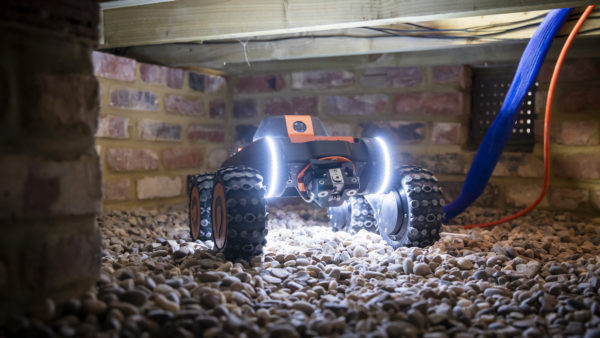A Unity-commissioned survey of architecture, engineering, and construction (AEC) and manufacturing companies has found that adoption of real-time 3D is poised to grow rapidly in the next few years.
Although only 19% of respondents say their firms have adopted 3D, 55% say they will have adopted it within two years. And 94% of firms that have adopted 3D are planning to extend it further.
Commissioned by real-time development platform Unity in October last year, Forrester Consulting conducted an online survey of 358 staff with responsibility for creating 3D content (or overseeing that content creation) for their companies and/or knowledge of the 3D technology landscape to explore this topic.
It found that visualisation techniques across the product and building lifecycles in these companies are “stuck in the past”, with many still using physical and 2D modelling. The survey reported considerable issues for many as a result – 61% of respondents said their organisations experience challenges due to their poor visualisation capabilities in areas such as staff training, marketing, field service and interdepartmental collaboration.
The vast majority of firms which have not adopted said they see the potential in real-time 3D: 97% believe real-time 3D would improve or revolutionise their workflows and processes.
Forrester found that companies using real-time 3D today are seeing an increase in sales, decrease in costs, and improved time to market.
The top reason given for not adopting real-time 3D visualisation tools is their perceived cost. But Unity points out that cost savings and increased sales top the list of benefits reported by decision makers whose firms have already implemented these tools.
Respondents highlight savings across their business, from reductions in their energy bills (29%) to slashing product wastage (45%), reducing the time and money spent on making and testing physical prototypes (58%), and general savings on the cost of making the finished product (66%).
Responding to the survey findings, Unity made several recommendations including:
Approach real-time 3D visualization as a multi-use-case opportunity
Unity said: “Organisations implementing real-time 3D visualisation solutions recognise the opportunity to deploy them in supporting multiple use cases across the business. Manufacturing decision makers interested in using this technology name just under six potential use cases on average: those that have implemented real-time 3D tools report more than eight actual use cases on average.
“Once these tools are available, people find ways to use them that reach far beyond the product design department, reducing costs, simplifying collaboration, and ultimately supporting the creation of better products.”
Learn from the few who do it, not just the many who talk about it
Unity said: “Almost across the board, decision makers whose companies have invested in real-time 3D visualization report more value, more benefits, and more potential use cases in their business than those at firms that have yet to implement.
“For example, leaders at companies that have invested in real-time 3D are much more likely to see it delivering value to designers, technicians, and customers than their peers who have not yet done so.
“Obvious use cases like product design or engineering prove even more valuable than non investors expect, but so do less obvious use cases. For example, 65% of non-investors expect real-time 3D tools to be valuable in supporting interdepartmental collaboration. But, among those who’ve tried it, the number jumps to 90%.”
Image: Parichart Thongmee/Dreamstime.com












